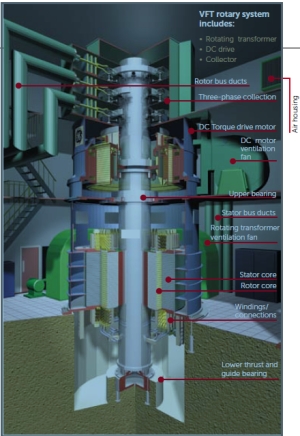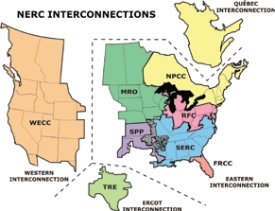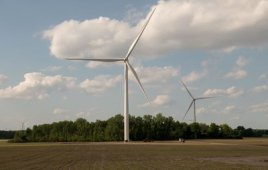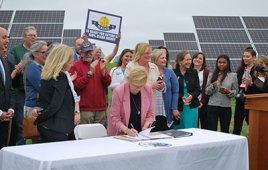
VFT Machine: GE’s Variable Frequency Transformer is capable of transferring up to 100 MW from one grid to another while matching frequency and phases.
Four separate electrical grids cover the U.S. and Canada. Most are synchronous (same frequency and phase) so they can be connected by direct transmission lines. They are all busy places but the Eastern Seaboard is perhaps more so because of large population concentrations, such as New York City. On days when the city needs more power, as it does in a heat wave, it would be nice to tap into neighboring grids to use their excess power. But doing so is not as simple as flipping a big switch. Neighboring grids such as the Quebec, Canada grid is asynchronous – which means that they operate on slightly different frequency making a direct connection impractical.One answer to the connection dilemma is the Variable Frequency Transformer or VFT, from General Electric Inc, Atlanta (gepower.com/vft).
The standard rating of GE’s VFT is 100MW per channel and as many as needed can be combined to provide the needed power transfer. The VFT’s core technology is a rotary transformer with three-phase windings on both rotor and stator. A motor and drive controls adjust the rotational position of the rotor relative to the stator, thereby controlling the magnitude and direction of the power flowing through the VFT.
The design lets a utility precisely match the phase angles of the two grids to be connected and seamlessly provide power flow from one to the other with infinite variability. “This transfer of electrical power can be made in either direction, going from importing of 100 MW to exporting of 100 MW, in a matter of seconds,” says GE Senior Product Marketing Manager Jim Roedel.
The company is nearing completion of a 300 MW system in New York. It houses three 100 MW VFTs, although there is no technical limit to the number of units that can be paralleled.
Roedel says the rotary transformer works with 99% efficiency so losses are low. The VFT produces nearly zero harmonics because of its electric-mechanical design. That feature makes for easy siting where existing generators or other devices are located, and alleviates the concern of over potential control interactions. Harmonics are high frequency electrical noise that comes from electronics in power applications. If uncontrolled, they generate heat and premature failure of electrical components.
What’s more, the overall VFT footprint can be designed for small areas. The recent 300-MW installation in New York will occupy less than an acre. Roedel says the unit has a life expectancy of about 30 years.

NERC Interconnections: The North American Electric Reliability Corp. drew the map of the North American grids. Mexico is on a fifth and asynchronous grid
Filed Under: Uncategorized




